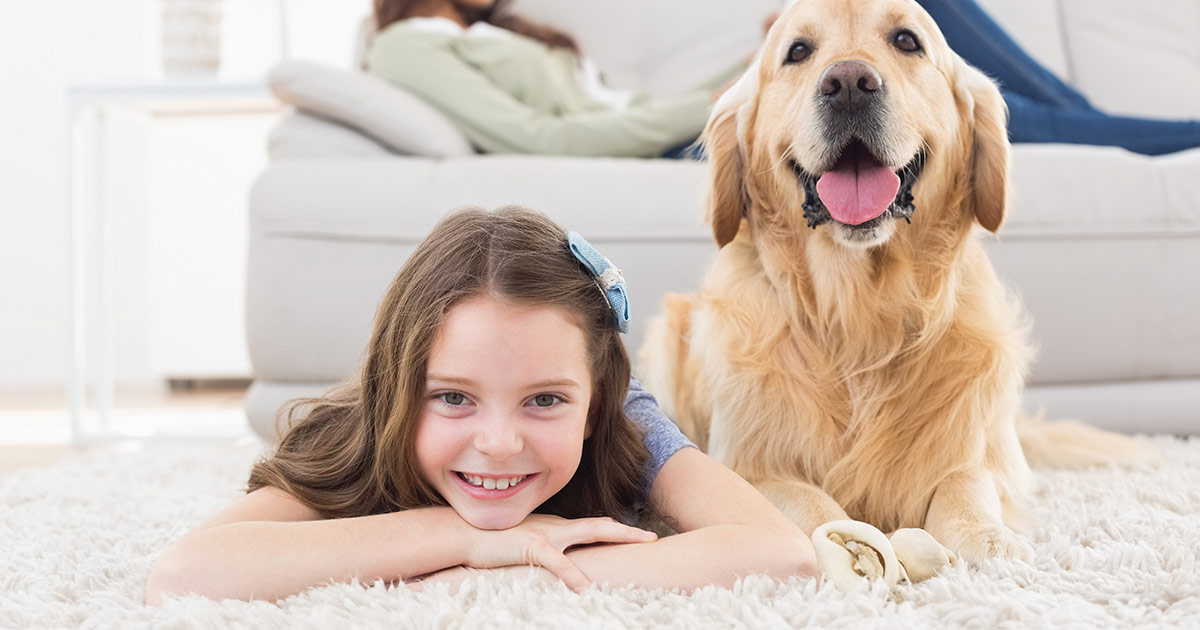Having a pet is incredibly rewarding, but it's also a huge responsibility. Part of that responsibility is ensuring your home is equipped and ready to be a safe environment for your animal companion. For expert insight, we connected with Megan Ellinger, Director of Animal Welfare; Lyndsey Sturgeon, Canine Behavior Coordinator; and Kelly James, Animal Behavior Coordinator from Humane Society of West Michigan (HSWM).
First, it's smart to get an indoor camera to monitor your pet's behavior while you're away. When it comes to dogs, our HSWM experts suggest having a size appropriate crate, baby gates and/or an exercise pen, depending on your pet's preferences and how far into potty training they are.
"Provide a resting place in a low-traffic area of the home that's still in a common area, as this will offer a chance to be a part of what's happening but also give your pet the choice to retreat to a safe place, if needed," HSWM experts said. "Never rely on a fenced space to contain a dog until you know they're not willing or able to go over or under it. Go outside with them, even in enclosed spaces, to make sure they stay securely in the space."
For cats, understand that it's natural for them to climb and that being up high can make them feel safe. For safety, anticipate potentially needing to secure heavy/tall items to the wall.
"It's important to consider what items may look like a nice cat tree or perch and decide whether you'll want them to access that space or if it's safe to do so," HSWM experts explained. "If you decide to leave these items around, it's important to provide alternative options to be able to perch or hide like cat trees or shelves."
Cats also need a place to scratch! Our experts suggest providing vertical and horizontal scratching options, especially if you want to deter them from scratching furniture.
For all pets—including rabbits and other small animals—chewing can be a behavior you'll need to prepare for.
"The most common household items that dogs tend to show interest in chewing are personal items—shoes, socks, underwear, etc.—and soft or wood surfaces. Most adult dogs won't chew on cords unless there's an underlying anxiety issue but puppies are open to investigating ANYTHING!" HSWM experts said, adding that you should provide a variety of toys of different textures and sizes to have something enticing you can use to redirect dogs when they're inappropriately chewing.
"Monitor any and all interactions with toys to ensure they don't ingest or choke on them. There are items, however, that are safe to leave pets alone with, such as Kongs and some food-based items."
Experts say it's important to keep easily accessible chewing or edible items out of reach, covered or in cabinets, especially for cats, as they can easily get on counters and tables. Even strings on your blinds can be dangerous! And if a rabbit has access to a whole room or home, owners should be mindful to block dangerous items that may be chewed on (cover cords, hide craft items like rubber bands and thumb tacks, block baseboards, etc.).
"Moral of the story, limit access to anything you don't want chewed on and provide appropriate alternatives!"
Adopting a Pet?
Consider doing so on a weekend or when you have some time off work, so they have ample time to adjust to your space and being left alone prior to you having to leave for a significant amount of time. By doing this, you lessen the chance of your pet hurting themselves or being destructive when left alone.
Written by Sarah Suydam, Managing Editor for West Michigan Woman.
This article originally appeared in the Aug/Sep '23 issue of West Michigan Woman.




